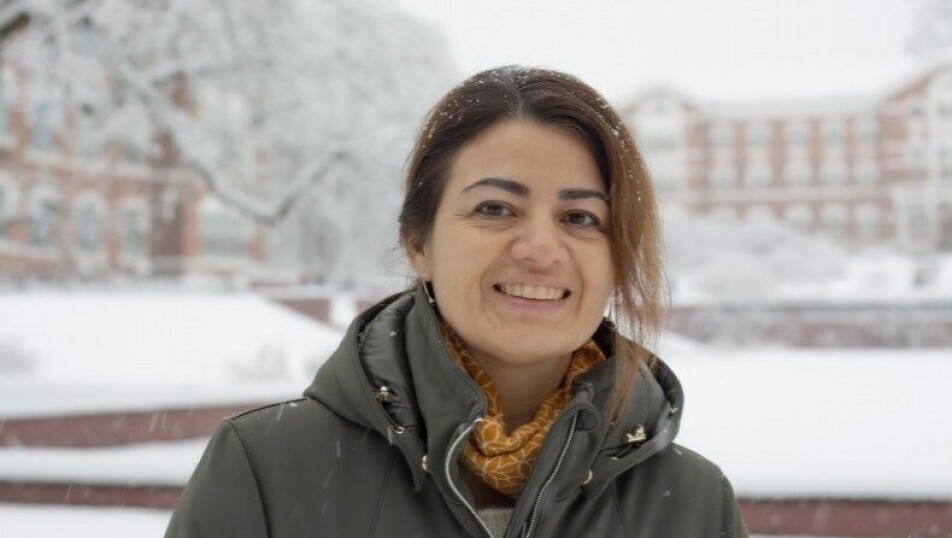THIS ARTICLE/PRESS RELEASE IS PAID FOR AND PRESENTED BY the Norwegian University of Life Sciences (NMBU) - read more

Differences in schools are reinforced by free school choice and information about the schools' national test results
Primary schools in Oslo are quite highly segregated into social, ethnic and economic categories compared to other European cities. Research & policy join forces to tackle the situation.
Segregation in schools is a growing problem in all of the larger cities in Europe. Children are increasingly seperated from other children who have different socio-economic and ethnic backgrounds.
School segregation takes different forms and is caused by diverse factors.
What the various expressions of school segregation have in common is that they all have a negative impact on the social and educational opportunities for children, as well as social cohesion.
Segregation in Oslo schools
Researchers and policy makers explored segregation in schools in Oslo, Barcelona and Milan. The team investigating Oslo looked at the socio-economic and ethnic background of pupils attending primary school (1-7th grade).
They learned that school segregation more or less follows the residential pattern of the city. Children in Oslo are assigned a primary school according to the child’s address, with lower secondary school assigned according to which primary school is attended.
As the vast majority of families in Oslo send their children to state schools (94 per cent of the children in Oslo in comparison to 65 per cent in Milan), specific areas of the city are increasingly characterised by quite homogeneous school composition.
It is therefore very likely that children in Oslo will live close to and go to school with children from a similar socio-economic background to their own.

Choice of school amplifies segregation
Oslo differed from Milan and Barcelona in that families in these cities are less tied in where they send their children to school. School catchment areas in Milan are really only used to ensure the right for children to be assigned a place in the local school.
In Barcelona, parents can choose from 5 different schools (state or private) located in proximity to the residence of the children.
In Oslo, it is possible to apply to non-assigned schools but there is no guarantee of acceptance, and applying outside of the catchment area is not commonplace.
“In Milan and Barcelona, school segregation is driven more by the parents’ or caregivers’ choice of school, and school segregation is clearly higher than residential segregation. This indicates that the school choice principle usually amplifies the process of segregation,” Roberta Cucca explains.
She is an urban sociologist at the Norwegian University of Life Sciences (NMBU) who co-led the work in Oslo.
The middle class is moving in
There are, however, some areas in central Oslo with an increasing social mix. This is due to gentrification trends such as that we see in Grünerløkka, and the establishment of new residential areas such as in Løren and Ensjø.
Gentrification is a process where people who belong to the middle class or have higher education move into an area dominated by the working class or other underprivileged groups.
“In some such areas of the inner city, families are more inclined to select a school outside the catchment area. The result is that in these districts, some state schools are becoming more mixed – though high levels of segregation are still seen in other schools,” Cucca says.
However, it's not all bad news for Oslo.
Higher salaries in vulnerable areas
In comparison to the other cities studied, Oslo excelled in its compensatory policies for schools in more impoverished areas. These policies provide considerably more resources to schools in which there is a higher concentration of vulnerable households.
An example of such policies is higher salaries for staff in vulnerable areas. To avoid a high turnover of teaching staff, Oslo focuses on recruiting and retaining skilled teachers and school leaders in these areas by offering higher salaries (among other incentives).
This policy was started in 2007 with a timeframe of 10 years and was so successful in reducing turnover that the policy was renewed, and is now in place at least until 2026.
In several districts of Oslo, extracurricular school activities and offers are set up for children during holidays, including on Christmas Eve in some areas. This is partly a result of pupils themselves requesting that their school stays open during the holidays. Additionally, the after-school activity program (AKS) is provided free of charge for children in several districts.
Fares badly on free meals
In comparison to Barcelona and Milan, Oslo still fares badly in its policies for the provision of food for underprivileged children.
In Barcelona and Milan, such children are offered free hot meals at school. Though Oslo introduced a free meal to youth in upper secondary education in 2022, and will do the same for lower secondary pupils in 2023, there is much room for improvement.
Better food policies in Oslo’s schools could benefit the health and development of many of the city’s children, the researchers suggest.
Strategies to tackle school segregation
According to the researchers, urban planning, housing, and education policies should work together. Tackling school segregation requires a combined effort. All of the governing policies that affect school segregation need to be coordinated.
This is particularly true for Oslo, where school segregation is driven mainly by the residential area.
“Affordable housing needs to be made more accessible to families in the more affluent areas of Oslo in order to provide more residential choice for low-income or middle-class families,” says Cucca. “In other cities, densification strategies are seen as opportunities for creating more mixed neighbourhoods by providing affordable housing solutions for families. This could also be an option for Oslo."
The type of information provided to the public is also important for tackling school segregation.
The researchers observed that information on schools’ national test results and their socio-demographic composition tell us nothing about school quality, and only serve to increase processes that lead to school segregation.
Good results from more mixed schools
We need to rethink these information policies, the researchers argue. The public needs to be provided with better evidence of the advantages of growing up in more mixed school environments - also for children from more privileged backgrounds.
“Mixed school environments can positively affect both academic and social skills. School segregation limits children’s preparedness for our multicultural world. This is also relevant for children from majority groups,” says Cucca. “As a result of intercultural contact, students from the majority group are predicted to be less discriminating in comparison to students whose school environment is not mixed, with a de-stigmatising affect.”
Oslo has several examples of successful mixed schooling. An example is in the district of Grünerløkka, where schools with a mixed socio-economic/ethnic profile also achieve excellent academic evaluations and high satisfaction ratings from both students and parents.
“It’s time to focus on these good practises in the public debate about schools,” says Cucca.
———
Read the Norwegian version of this article on forskning.no
See more content from NMBU:
-
Shopping centres contribute to better health and quality of life
-
We're eating more cashew nuts – and the consequences are serious
-
Do young people with immigrant parents have better health?
-
Who’s picking your strawberries this summer?
-
Can coffee grounds and eggshells be turned into fuel?
-
Rising housing costs fuel inequality in Norway





































